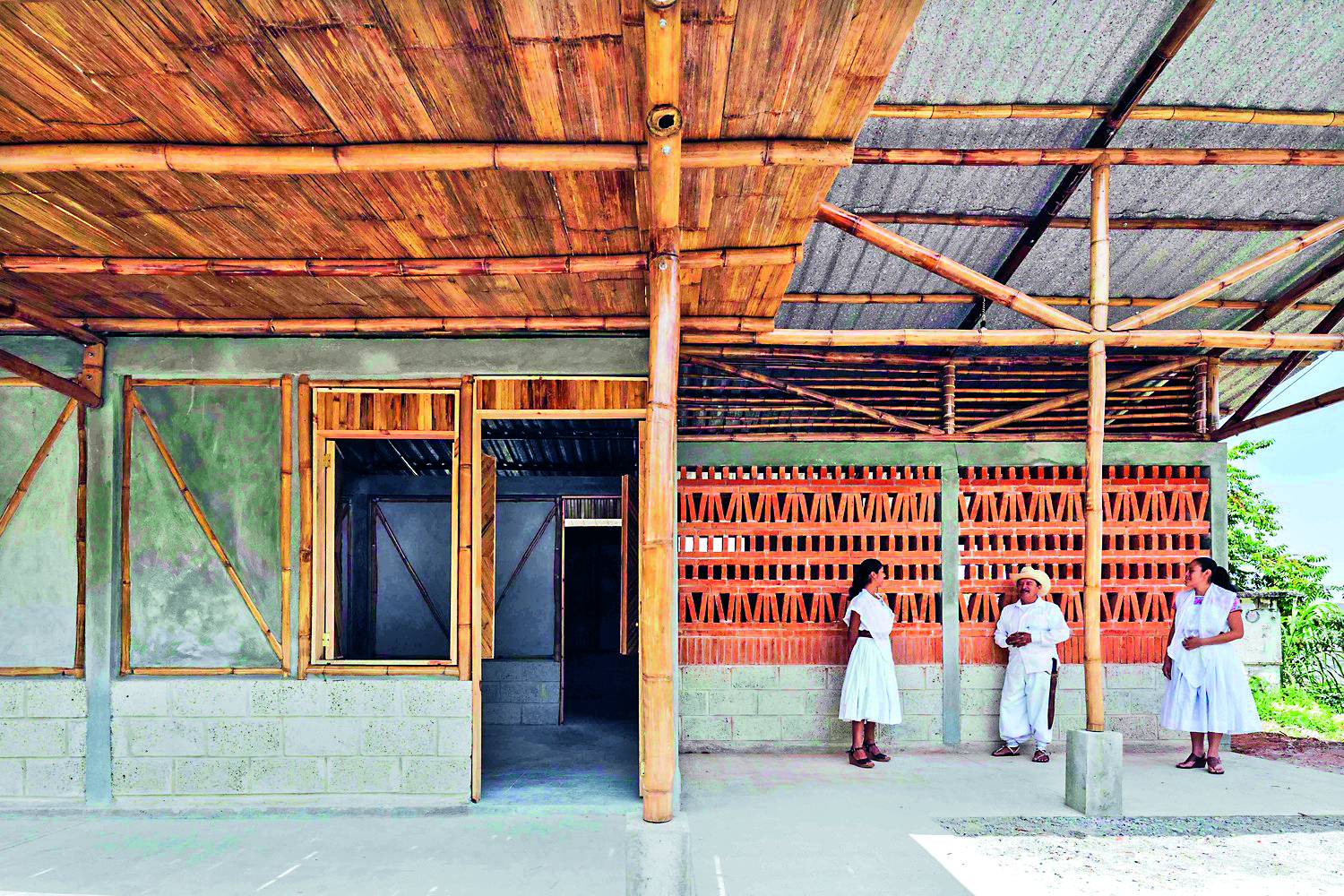A testament to beauty and simplicity
Embracing local materials in interior design

Incorporating local materials also supports the local economy by creating opportunities for small-scale producers and artisans, sustaining local industries, and preserving cultural practices integral to regional identity. (Image by arrangement)
In the world of interior design, the beauty and simplicity of local materials have become a focal point, transforming spaces into reflections of regional identity and sustainability.
The essence of local materials
Understanding the impact of our material choices on the environment and local communities, designers now prioritise sustainability. This focus enhances the aesthetic and functional quality of spaces while supporting regional craftsmanship. Materials like earth, laterite, stone, bamboo, and raffia, unique to their locales, challenge the global trend of prefabricated construction and imbue homes with a distinctive character and cultural essence.
The versatility of bamboo and jute
The versatility of bamboo and jute
Rupana Reddy, principal architect, NA Architects, emphasises the practical and aesthetic benefits of bamboo and jute, “Bamboo, a fast-growing material, offers flexibility and resilience, making it an excellent substitute for wood. Jute, with its natural fibres, adds warmth and character to interiors, embodying the earthy hues that bring a rustic charm to spaces.”
Traditional meets modern
Traditional meets modern
Incorporating traditional materials into modern designs creates a balance of elegance and environmental friendliness. For instance, a project in the United Kingdom used locally sourced wood for modular homes, reflecting local architectural styles and enhancing the environmental performance. These cottage-sized residences, built with vertical larch and corrugated metal roofs, blend seamlessly into the serene rural landscape, fostering a sense of place.
Case Study: Workers Pavilion by NO Architects
Case Study: Workers Pavilion by NO Architects
In Kollam, India, NO Architects Designers and Social Artists developed a ‘Workers Pavilion’ using local materials like bamboo, wood, grass, and mud. Their modular structure, with bolted connections and friction piles, reduces the carbon footprint and builds structures that local communities can maintain. “This technique bridges the gap between modular house production and local settings,” says an architect from the firm, “allowing for unique architectural expressions influenced by geographical location and local craft techniques.”
Fusion of aesthetics: Yuomori Onsen and Spa
Fusion of aesthetics: Yuomori Onsen and Spa
Delving into the subject further, Rupana Reddy talks about Yuomori Onsen and Spa: “The interior design showcases minimalist Japanese aesthetics combined with local materials. The gradual transition of textures and colours from the reception area, featuring bamboo-patterned concrete and dark wood, to the simplified, lighter shades on the upper floors, illustrates the harmony of traditional and contemporary elements.”
Cultural and economic benefits
Cultural and economic benefits
Mitali Aharam, founder Crafted Spaces, highlights the broader impact of using local materials, “The use of local materials in interiors extends beyond environmental and economic considerations. It celebrates local craftsmanship, traditions, and heritage, creating spaces that tell a story and resonate with users. This approach fosters community pride and connection to place, contrasting with the homogenised, mass-produced interiors.”
Furthermore, incorporating local materials also supports the local economy by creating opportunities for small-scale producers and artisans, sustaining local industries, and preserving cultural practices integral to regional identity.
"Bamboo, a fast-growing material, offers flexibility and resilience, making it an excellent substitute for wood. Jute, with its natural fibres, adds warmth and character to interiors, embodying the earthy hues that bring a rustic charm to spaces.” — Rupana Reddy, principal architect, NA Architects
"The use of local materials in interiors extends beyond environmental and economic considerations. It celebrates local craftsmanship, traditions, and heritage, creating spaces that tell a story and resonate with users.” — Mitali Aharam, founder, Crafted Spaces
( Source : Deccan Chronicle )
Next Story
